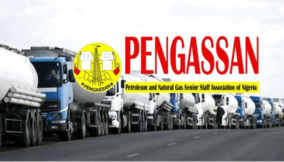Nigeria has flared natural gas valued at $685 million since January, according to the official data, a development that highlights the country’s failure to activate a programme planned to commercialise gas flares.
According to the Nigerian Gas Flare Tracker, a satellite-based technology created by the National Oil Spill Detection and Response Agency (NOSDRA), Nigeria flared 195.7 billion standard cubic feet (scf) of gas from January to November.
Oil companies burn the gas found in wells when producing oil because they are unwilling to make the investments to harness it. The process fouls the environment. The government imposes fines but they are cheaper than making investments to harness the gas.
In 2016, the Federal Government set up the Nigerian Gas Flare Commercialisation Programme (NGFCP), an ambitious plan to sell over 700 million scf of gas a day flared at 178 different sites.
In February 2020, the then regulator, the Department of Petroleum Resources, announced that it had shortlisted 200 investors to bid for gas flare sites after the evaluation of statements of qualification submitted by interested companies. But the programme was later stalled. It said in June 2020 that that programme had been delayed by the COVID-19 pandemic as bidders needed access to the flare points.
Following the signing of the Petroleum Industry Act (PIA) by President Muhammadu Buhari in August 2021, the DPR was split into two, comprising the Nigerian Upstream Petroleum Regulatory Commission (NUPRC) and the Nigerian Midstream and Downstream Petroleum Regulatory Authority.
Based on the right of the Federal Government under the Petroleum Act, the NGFCP was designed to offer a series of auction rounds, wherein the government takes the flare gas at the flare sites and auctions it to third parties for commercialisation.
In October this year, the NUPRC re-launched the NGFCP 2022 to reduce gas flaring and ramp up its deployment for economic use.
Gbenga Komolafe, its chief executive officer, said the relaunch followed a submission by the NUPRC programme management team set up to coordinate the implementation of the NGFCP.
According to him, the formal network of the programme was to realign it with the objectives of the PIA and refocus the NGFCP to reflect current flare disposition, operational realities as well as prevailing market, environment and global dynamics.
He said that the commission was committed to the successful completion of the NGFCP, which he said would drive the attainment of Nigeria’s pledge to end routine gas flaring within the decade and contribute to the reduction of global emissions, consistent with President Muhammadu Buhari’s declaration at COP 26.
Komolafe said the auction process has been streamlined to enable an accelerated delivery schedule for this exercise with the announcement of winners planned for December 2022.
He said existing applicants would derive value from their previous endeavours on the NGFCP and would be deemed pre-qualified once they meet the basic requirements for status validation as stated in the Request for Qualification.
According to the NUPRC, 47 gas flare sites are on offer with a total potential output of about 250 million scf of gas per day guaranteed for five years.
Etulan Adu, an oil and gas production engineer, said Nigeria does not do much about flare reduction because of the economics of building facilities that can capture such gas.
“The increase in penalties for flaring gas will influence the commercialisation of gas but it will place the international oil companies (IOCs) at tight end and some could divest such marginal assets if the economics does not favour long-term operations anymore,” said Adu.
The Nigerian government set up the Nigeria LNG Limited in 1999 as part of efforts to cut gas flares and monetise the commodity routinely wasted.
Some analysts say financing still remains a major challenge to ending the practice.
“I think the net zero commitment requires substantial funding and the country cannot, at the moment, provide such financing,” said Ayodele Oni, energy lawyer and partner at Bloomfield Law Practice.
“Hydrocarbon production will necessarily lead to flares and one option is to release the flare into the atmosphere or fund projects to utilise the flare,” he said.
Since 1984, it has been illegal to flare gas in Nigeria without the permission of the minister of petroleum resources. Successive governments introduced fines but none could end the practice.
In 2018, the federal government increased the penalty for gas flaring from N10 per 1,000 standard cubic feet (scf) to $2 per 1000 scf of gas flared.
Read also: Nigeria earned 2trn from natural gas sales, highest in 5 years
The current penalties for gas flaring in Nigeria officially stand at $2 per 1,000 standard cubic feet (scf), according to NOSDRA.
Companies producing more than 10,000 barrels per day (bpd) pay a fine of $2 per 1000 scf of gas flared, while companies producing less than 10,000 bpd pay a fine of $0.5.
According to NOSDRA, the penalty for flaring gas in Nigeria from January to November this year hit $391.4 million.
The flared gas in Nigeria this year emitted 10.4 million tonnes of carbon dioxide into the atmosphere, with a power potential generation of 19.6 thousand gigawatts hour, according to government data.
According to the World Bank, gas flaring has persisted from the beginning of oil production over 160 years ago and takes place due to market and economic constraints, lack of appropriate regulations and political will.
It also said the amount of gas that is currently flared each year -about 144 billion standard cubic feet – could power the whole of sub-Saharan Africa.
Join BusinessDay whatsapp Channel, to stay up to date
Open In Whatsapp





